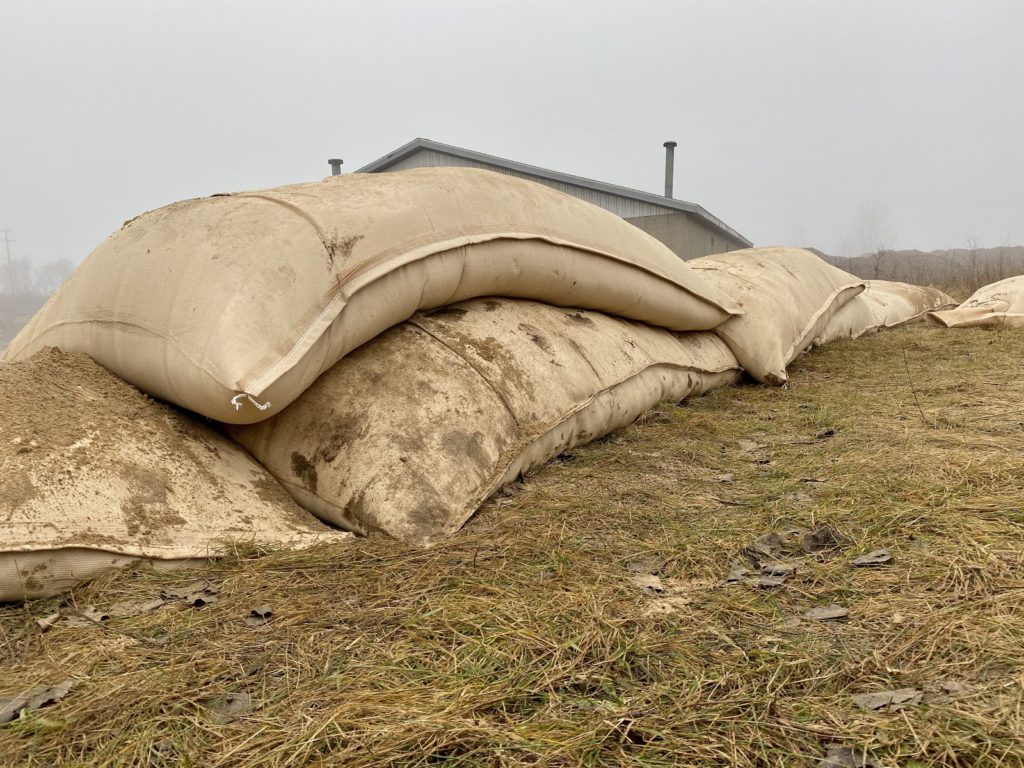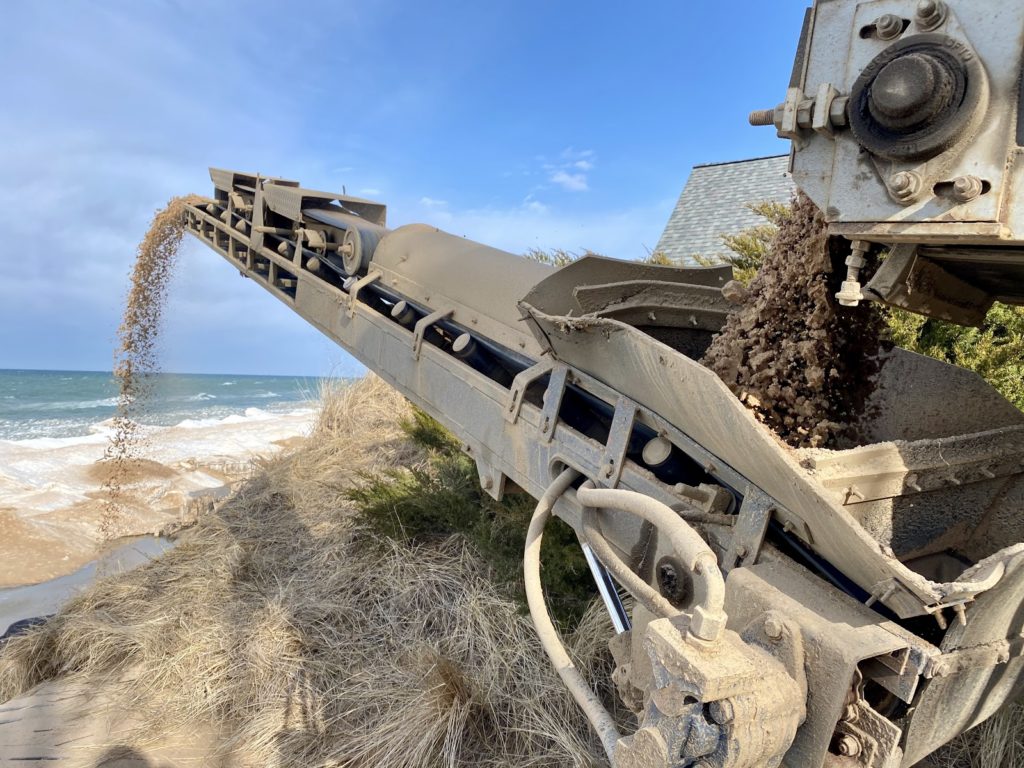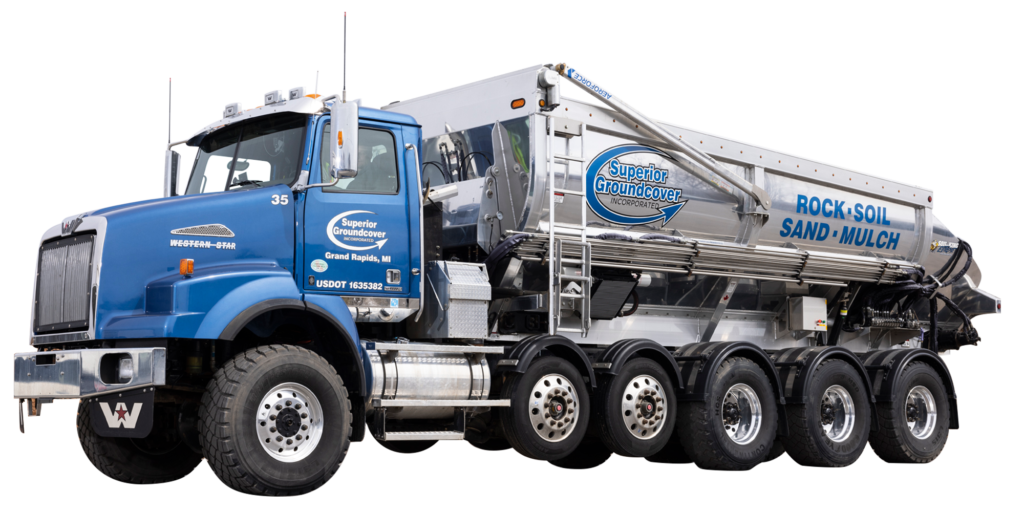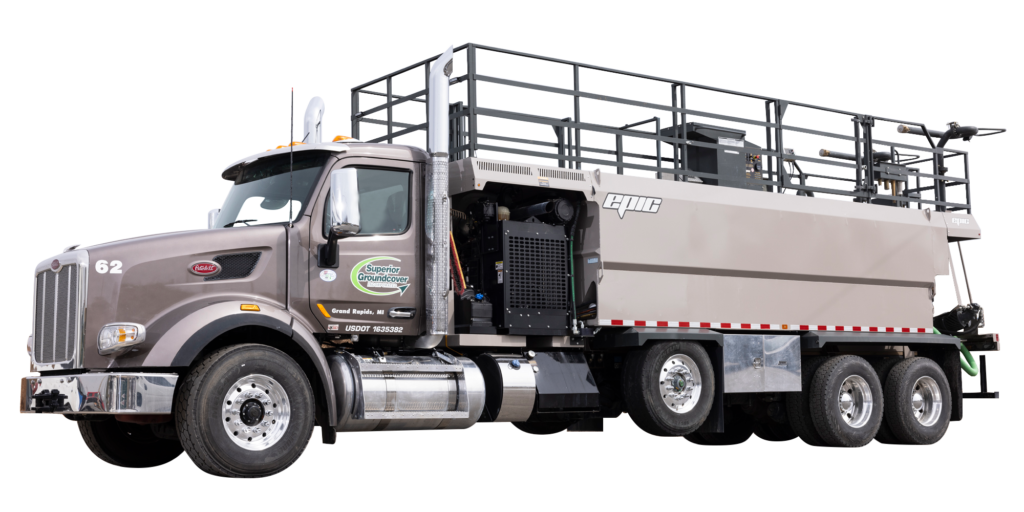
What is the best solution for Lake Michigan beach erosion?
All along the Great Lakes, homes are being threatened by shoreline erosion. With lake water levels 3 feet above average, beaches are disappearing. We have covered the causes of shoreline erosion and different methods of shoreline erosion control over the course of this developing situation if you are interested in learning more.
In this article, we wanted to address what happens to beaches specifically, how to prevent and control beach erosion, and methods of reestablishing beaches that have been lost.
There are actions that homeowners can take to protect their homes and restore their beaches using sand. While these methods are great temporary solutions to a threatening situation, it’s important to remember that they are not permanent solutions.

Sandbags
Sandbags are a good temporary measure to protect your beach and home from shoreline erosion.
“EGLE emphasizes that sandbags are not a permanent solution to erosion problems and the bags eventually must be removed. Property owners should work with a contractor to design a more permanent solution, such as boulders, riprap, or even moving homes and other infrastructure farther inland.”
— https://www.michigan.gov/egle/0,9429,7-135–512471–,00.html
As a temporary solution, sandbags can be cost-effective. When installed, sandbags help reduce wave energy before the wave hits the shore.
Sandbags are typically made from an eco-friendly woven geotextile consisting of polypropylene yarns.
Sand Tubes
Sand tubes, Geotextile tubes, or ecotubes, are another tool for controlling shoreline erosion. Sand tubes, like sandbags, are made of an eco-friendly fabric and then typically filled with a sand and water mixture, also known as a slurry.
When installed, they work as a breakwater to reduce wave energy.
Sand tubes can be a “first-line” to protect your beach and home from incoming waves. They protect the shoreline by creating a barrier. Sand tubes are also able to absorb and retain sand which helps shorelines.
Sand tubes come in many different sizes and can be customized to your situation, making them a cost-effective, temporary solution.
Superior Groundcover is able to supply and fill geotextile sandbags and tubes using our sand blower trucks.

Long term solutions for beach erosion
Most methods to “control shoreline erosion” are actually only temporary measures that do not solve the problems long-term. In order to find a long-term solution we will need to address the causes.
There are many initiatives that are working to identify and pause human causes that could be contributing to rising water levels. For example, dams in Ontario, Canada are dumping close to 42,000 gallons of water into Lake Superior per second. Practices like this are not the main cause though. Halting these practices would only help lower water levels by inches rather than feet.
Another influence on the rising water level is climate change. We cannot solve climate change immediately, unfortunately, which is why we need to make the best choices to preserve properties until we have a better long-term option, while also considering the environmental impact of our actions.
A real long-term solution can only be achieved through research and appropriate funding.
“In the past, coastal protections have been piecemeal and often counterproductive. A protective wall erected in one place can result in erosion in another. What’s desperately needed is for the Great Lakes states and federal agencies to work in a coordinated and scientific way to protect land and infrastructure, as well as taxpayers’ wallets. That’s what the Great Lakes Coastal Resiliency Study could do.” — Chicago Sun Times
The US Army Corps of Engineers is currently working to fund this study in 2020.
“The goal of the Great Lakes Coastal Resiliency study is to develop a programmatic coastal resiliency plan that outlines a collaborative investment strategy for the Great Lakes coasts, while creating a partnership and strong collaboration between the Corps of Engineers, Great Lake states, the Coastal States Organization, National Oceanic and Atmospheric Administration, U.S. Geographical Survey, Federal Emergency Management Agency, and U.S. Environmental Protection Agency. “

What are ways to prevent beach erosion?
Preventing beach erosion can be a simpler solution than repairing it. If you are a homeowner along the shoreline or are planning to build near a lake, implement the following tips to prevent beach erosion.
First, do not remove natural vegetation. It can be tempting to remove natural plants and replace them with your own landscaping. This can be catastrophic to both the natural environment, as well as your beach. Natural plant life along the water have deep root systems that help hold sand in place and help to absorb wave energy
Next, avoid removing natural rock along your beach. We all enjoy a soft, sandy beach, but pulling out rocks and replacing them with sand won’t last. Sand is easily displaced — especially when natural barriers like plants and rocks are removed. You can maintain your nice sandy beach and prevent shoreline erosion by leaving natural plants and rocks in their place.
Can I add sand to my beach or shoreline?
Adding sand to your beach is not an erosion control solution. Beach backfill can be done in order to replace lost beach, however, it’s important to evaluate your situation to determine if this is a reasonable response. Because sand is easily displaced, beach fill or backfill can often be a fruitless attempt to recreate a beach.
Beach fill can be a solution if the beach sand has been previously excavated or where the impacts on the environment are minimal.
Installing beach sand can help when a barrier is created. For example, when homeowners install an emergency barrier like sandbags, rock revetments, or seawalls, they need to be backfilled with sand.
The watershed council still warns against adding sand before understanding its impacts: “…filling is often a futile, environmentally destructive action and should only be pursued after careful study and planning. If a site is conducive to the long-term existence of sandy material, it would likely be there naturally. If it is not there, it is because the energy is either too great to allow it to remain in place, or not great enough to wash away the finer materials. In either case, sand fills on the littoral shelf of lakes often disappear in a relatively short time, either by washing away or simply sinking out of sight in a few years into the softer underlying sediments.”
When installing a seawall, backfill is required. This must be done by a professional team. If this is done incorrectly, severe environmental damage can occur.
Make sure to consult a professional if you are looking to add sand to your beach in order to reestablish a beach that has been lost to erosion. Sand beaches can function to control erosion and are enjoyable when installed the right way. If done wrong, they can be a wasted investment as well as cause damage to the lakes.
Is beach nourishment a viable strategy to manage beach erosion?
Beach nourishment is the process of adding sand to beaches in large quantities in an effort to prevent and control erosion and replace lost beach. This is sometimes called “soft-armoring” in contrast to “hard-armoring” (installation of seawalls or other methods of shoreline hardening).
Beach nourishment is often considered a superior option to shoreline hardening as shoreline hardening methods can have adverse consequences for the environment and cause worsening erosion.
Beach nourishment is still not a perfect solution, though.
Adding a large amount of sand to a beach kills much of the existing beach life. The construction and installation equipment required to fill the beaches also cause environmental detriment.
In addition, the wrong type of sand can change the habitat of the animals living there. Different types of sand have different chemical makeups that either allow animals to thrive, or are not conducive to marine and shore life.
Even when the right sand is installed using a low-impact method, a beach ecosystem takes time to recover.
Beach nourishment may be less harmful than shoreline hardening, but it’s still not a long-term erosion control solution. Waves, wind, and high water levels will continue to displace sand and continue to erode the beach. Nourishment can help with erosion only as long as the sand remains.

What is the best solution: Seawalls or Beach Nourishment?
While both methods of shoreline erosion prevention and control have harmful consequences for the environment, beach nourishment is a less harmful choice.
If you choose to implement beach nourishment to protect your beach and property, here are some tips to ensure you are protecting your investment as well as the environment.
First, make sure the sand being installed matches the existing environment. A professional should be able to help guide you on this. Next, plow the sand shortly after placing it so that it will be more hospitable to animal life. Try to do the installation in stages versus all at once.
Choose a professional that considers the impact of erosion control on the environment. Superior Groundcover is proud to assist in a variety of erosion control methods so that you can choose what’s right for your situation. When we install sand behind seawalls, rock revetments, or for beach nourishment, we use our sand blower trucks and stone slinger trucks This equipment helps reduce the impact on the environment.




